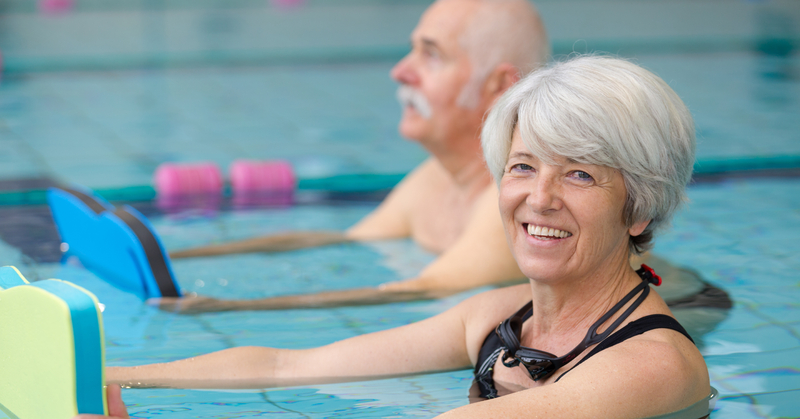
Regularly doing these activities may help reduce bothersome symptoms in your joints.
If your joints are stiff or painful due to arthritis, it may feel like the last thing you should be doing is exercise. After all, won’t all that activity make your joints hurt even more? It turns out that being physically active is one of the best things you can do to help ease arthritis pain. Of course, not every type of activity is appropriate if you have arthritis, but knowing what type of exercises to do to help rather than hurt your joints can help you manage this common but painful condition.
How does exercise help ease arthritis pain?
Regular physical activity helps reduce the stiffness that often accompanies arthritis. It also replenishes lubrication within the joints, helping to ease inflammation and pain. In addition, some exercises can help strengthen the muscles around affected joints, making it easier to move the joints with less discomfort. Another benefit to exercise in people who have arthritis? It may help you lose weight or maintain a healthy weight. Carrying less weight can do wonders for joint pain.
What types of exercise are best if you have arthritis?
The type of exercise you should or should not do may depend on where your arthritis is located and how advanced your condition is. For the most part, low-impact activities are usually recommended for people with arthritis, especially in the knees or hips. Activities such as walking, using an elliptical trainer, biking and swimming allow your body to stay active without much stress on your joints. Stretching and flexibility exercises are also beneficial. Many people with arthritis find pain relief when doing activities such as yoga or tai chi. Strength-training exercises can help build muscles surrounding the joint. It may be best to consult with a physical therapist or personal trainer before starting a weight-training routine if you have arthritis.
How long do you need to exercise to see benefits?
As with any aspect of your health, there’s no magic number that needs to be hit in order to reap the benefits of exercise. Aim for 150 minutes per week of moderate activity, but do as much as you feel comfortable doing. You can even exercise for just 10 minutes at a time if it’s easier on your joints. Any movement you do helps, even if it’s not considered formal exercise. Activities like gardening, walking the dog and raking leaves all get your body moving and can help ease arthritis pain.
What should you keep in mind when exercising with arthritis?
Although physical activity may help improve arthritis pain, there are a few things to keep in mind when exercising so you don’t do more harm than good. These include:
- Pace yourself. Start slowly and don’t overdo it. If you feel pain, stop and dial back your activity to a level that feels more comfortable.
- Warm up and cool down. Don’t just jump into exercise without getting your joints ready for action. Move gently at first, focusing on slow, easy movements. At the end of your workout, take a few minutes to cool down and stretch.
- Heat before, ice after. Applying some heat to your joints and surrounding muscles before you exercise improves circulation and may reduce stiffness. After activity, apply ice for up to 20 minutes at a time, if needed, to ease pain and swelling.
- Pay attention to your body. If you feel pain or notice swelling, take it easy. If your symptoms seem worse than usual or you have more pain, stiffness or swelling after you do certain activities, it may be best to avoid those activities.
Copyright 2023 © Baldwin Publishing, Inc. Health eCooks® is a registered trademark of Baldwin Publishing, Inc. Cook eKitchen™ is a designated trademark of Baldwin Publishing, Inc. Any duplication or distribution of the information contained herein without the express approval of Baldwin Publishing, Inc. is strictly prohibited.
Date Last Reviewed: August 14, 2023
Editorial Review: Andrea Cohen, Editorial Director, Baldwin Publishing, Inc. Contact Editor
Medical Review: Andrew Overman, DPT, MS, COMT, CSCS
Learn more about Baldwin Publishing Inc. editorial policy, privacy policy, ADA compliance and sponsorship policy.
No information provided by Baldwin Publishing, Inc. in any article is a substitute for medical advice or treatment for any medical condition. Baldwin Publishing, Inc. strongly suggests that you use this information in consultation with your doctor or other health professional. Use or viewing of any Baldwin Publishing, Inc. article signifies your understanding and agreement to the disclaimer and acceptance of these terms of use.